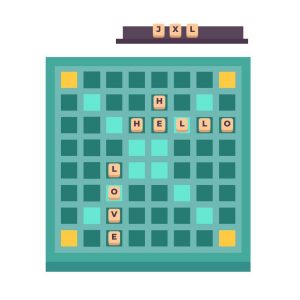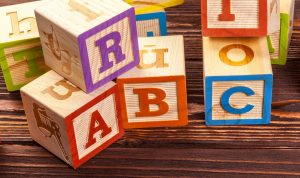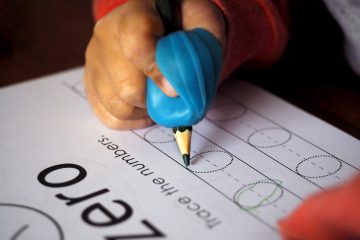Six-year-olds are sponges, collecting a lot of information daily. Many children at this age love books and learning how to read them. You may notice several changes as they become more interested in learning to read. You can also do things to pique their interest. You can read with them frequently and discuss different words you see daily.
Learning to read is not a ‘natural’ process that occurs independently. You will not be able to teach your child to read in a single day. Instead, concentrate on developing your child’s interest in reading. Focus on creating the groundwork for future reading abilities. Additionally, you may use reading activities to teach your children. It increases their enthusiasm for learning a language while having fun.
Why is Reading Important for Young Children?
We move from one dimension to another by immersing ourselves in the lives of fictional characters. We can learn about a culture that is quite different from our own by turning the pages of a book. We can also pick up new words and phrases, feel various emotions, and gain new skills and information.
Reading has a wide range of effects on child development due to its learning potential. Reading can help a child’s education, social and cognitive development, and well-being.
Here are some educational benefits of reading:
- Reading promotes a more diverse vocabulary.
- It enhances imagination and creativity.
- It helps children grow in empathy.
- Children learn more about their surroundings.
- Reading improves concentration.
Try these simple ways to teach kids how to read and make it a happy and gratifying experience.
1. Sight Words Flashcards
Sight words are those words a child usually can’t easily pronounce. These are also words that occur more frequently than the others (e.g., you, I, we, am, had, and, to, the, have, they, where, was, does).
“See the word, say the word” is a suitable method for learning sight words. For young children to become fluent readers, they must recognize and read sight words. Playing with flashcards and using reading programs are two ways to teach sight words.

2. Board Games
Kids this age are more engaged in structured games, so take advantage of these advancements while planning learning activities for your child. What’s Gnu is a fun way for younger players to improve their word recognition. It will also enhance their spelling skills while boosting self-esteem. Players slide the “Letter Getter” forward to reveal two letter tiles. They then fill in the spaces on their Word-Starter cards to make three-letter words. You can play with your child or with a group of kids.
3. Connect Four
Are your kids practicing sight words, word families, letter/number recognition? If your answer is yes, then this one’s for you. All you need is the game Connect Four. Write target sight words on dot stickers and attach them to one side of the pieces. Play Connect Four as usual. But before the kid takes their turn, they must pick one of the playing pieces with the stickers facing down. Have them read the sight word before putting the piece into play on the game board. If the child misses a word, explain it and have them return it face down while choosing a new one. When they have mastered all the words, replace the stickers with new ones.
4. Young Scrabble
As a parent, you probably have collections of Scrabble games. Create a version for your child based on the fundamental idea of the game. Give your child a wider range of letters to use instead of the standard seven. Make sure there are enough vowels. Try to get as many words as possible from your child using those letters. Start with three-letter words and work your way up to words with more letters to create a guiding list for him. Allow him to scribble down every word he creates on the piece of paper.
5. Tower Word Blocks

Building is something that children like doing. We use Legos, wooden blocks, or ABC blocks in various ways. And what preschooler doesn’t enjoy building blocks? This Tower Word Activity will help develop sight word skills and identification. It’s so easy to turn regular construction pieces into an entertaining game! Label Duplo blocks or Legos with printed words. Make sentences and stories out of them. Then go back and read what you’ve written.
6. Hopscotch Spelling
This game is best played with a group of kids so that everyone can work together to reach a common goal. Make four hopscotch maps in a large open area with seven letters. Each child is in charge of the letters in their hopscotch map. When you choose a word, the kids must now work together to hop to the letters in the correct order. For example, if the word is “apple,” the child with the letter “a” on his map must hop there first. The child with the letter “p” must follow and so on. It can get thrilling, and you may add a time limit to increase the tension.
7. Word Search
As children get older, they can participate in games that need them to decipher words. Begin by giving your child solved crossword puzzles or current easy word search problems. Ask that she search the jumble for specific words and circle them with a pencil.
8. Word-Based Snakes and Ladders
By changing the numbers with simple phrases, you may give your child’s favorite game a new spin. You can also buy a dedicated board with this variation. Or, you can use a pen to write simple words on all 100 squares of the board that your child can read. Play the game as you usually would on any other day. As he passes the squares, your child can count them and pronounce the words aloud. They also learn to scan the words by visual recognition.
9. The Treasure Hunt
Begin your child’s journey into the world of reading by introducing her to the joys of solving a riddle. Let your child discover how essential reading is. Hide her toys, old and new, throughout the home. Make a list of simple clues about those sites on a sheet of paper. A simple phrase like “where do you water the plants” will work. Make your child read the letter aloud, answer the questions, and then look for the hidden object.
10. Bowl of Words
You can make this tactile game with dollar store supplies. Ask your child to scoop words out of a “bowl of soup” and identify them. It’s a fun method to practice word recognition, spelling, reading, and fine motor skills.
Putting together some engaging reading activities doesn’t need to be complex. Of course, you must be an active participant in teaching your child. It doesn’t have to be a chore, and it should be enjoyable for both of you!
Guest post provided by Brookelyn Simms of Super Mom Picks


